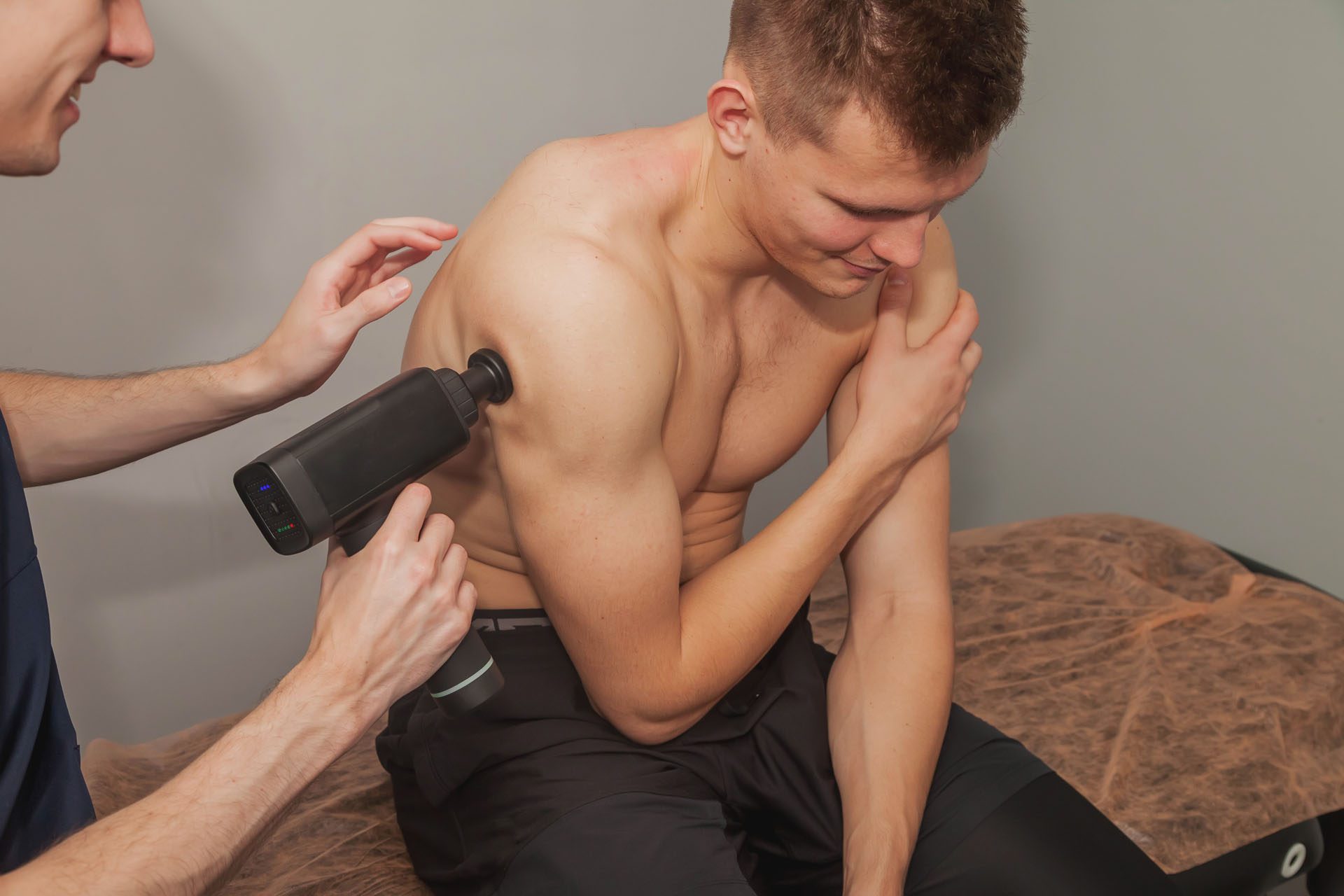Triceps Tendonitis: A Guide to Prevention and Treatment
Triceps tendonitis can be frustrating, especially when you need to rest from normal activities. Can knowing the causes, symptoms, and diagnosis help individuals understand the treatment and prevention of the condition?

Triceps Tendonitis
Tendons are connective tissue that attach muscles to bones, enabling the joints to move. Triceps tendonitis is inflammation of the tendon at the back of the elbow. It is most often caused by overuse of the triceps muscles. The condition can cause pain, swelling, and loss of function. It’s common in jobs that require regular hammering, shoveling, and overhead reaching, as well as in weightlifters, gymnasts, and boxers.
Causes
The triceps muscle runs along the back of the upper arm and is attached to the point of the elbow by a tendon. This muscle straightens the elbow. Tendonitis develops from repeatedly straightening the elbow against resistance. This causes tiny tears in the tissue, which leads to inflammation. Triceps tendonitis commonly occurs from repetitive manual labor tasks or sports activities like throwing sports, gymnastics, or boxing. Exercises that target the triceps muscle can cause tendonitis to develop, including kickbacks, dips, push-ups, and bench presses. For this reason, triceps tendonitis is also known as weightlifter’s elbow. (Orthopedic & Spine Center, N.D.)
Symptoms
Inflammation leads to a series of chemical reactions in the area of the injury. There are five main symptoms of inflammation:
- Redness
- Warmth
- Swelling
- Pain
- Loss of function
With triceps tendonitis, the pain and stiffness are felt at the back of the elbow. Weakness may also present when using the affected arm. Tendonitis usually causes more pain with movement than when resting. Pain can occur when straightening the elbow, which puts tension on the triceps, or bending the elbow, which stretches the tendon.
Diagnosis
A healthcare provider will ask questions and perform a physical exam to diagnose tendonitis. (Harvard Health Publishing, 2014) A healthcare provider will ask you to describe the pain and the activities that make it better or worse. The elbow will be assessed for movement issues, swelling, or deformities that could indicate a worse injury, like a tendon tear. A healthcare provider will order X-rays or other imaging, such as MRI, to assess for a bone fracture or more extensive damage to the tendon.
Treatment
Several types of treatments include self-care, physical therapy, and medications.
Self Care
Triceps tendonitis can be treated at home if symptoms are addressed early. These include:
Rest
- Rest the triceps tendon by avoiding activities that cause pain for a few days.
Ice
- Apply ice to the triceps tendon for 15 to 20 minutes, two to three times daily.
- Massage the area with an ice cube for several minutes.
Range of Motion Exercises
- Decrease stiffness in the elbow with gentle range of motion exercises.
- Slowly bend and straighten the elbow in a pain-free range, 10 times.
- Repeat several times per day.
Physical Therapy
Physical therapists use various therapies and tools when treating tendonitis, including (Prall J. & Ross M. 2019)
PT Modalities
- Physical therapy modalities are used to decrease pain, inflammation, and stiffness.
- Examples include ultrasound, electrical stimulation, and light therapy.
Manual Therapy
- Manual techniques for tendonitis include soft tissue massage, friction massage, stretching, and joint mobilization.
Exercise
- Stretching and strengthening exercises that target the triceps muscle and any other muscle weakness that might have contributed to the condition.
Activity Modification
- A therapist will look at the activities that led to the tendonitis and ensure you use the correct form and proper body mechanics.
- Sometimes, a physical therapist can make on-site changes in the work environment to help prevent further injury.
Medications
Medications that are used to treat the condition (Aurora Health Care, 2025)
NSAIDs
- Nonsteroidal anti-inflammatory medications are often used to treat tendonitis.
- Many are available over-the-counter, including Aleve, Bayer, and Advil.
- These medications can also be prescribed in higher doses by a healthcare provider.
Pain-Relievers
- Additional over-the-counter medications such as Tylenol can help decrease pain.
Oral Steroids
- These medications might be prescribed for short-term use to decrease inflammation if over-the-counter medications are ineffective in treating symptoms.
- Long-term use of oral steroids can cause more damage to the tendons. (Spoendlin J., Meier C., Jick S. S., & Meier C. R. 2015)
Corticosteroid Injections
- Tendonitis is frequently treated with an injection of steroid medication to decrease inflammation.
- However, having multiple injections in the same area can eventually cause tendons to weaken more. (NYU Langone Health, 2024)
Platelet-Rich Plasma
- PRP is made by taking a small amount of blood and separating the platelets or cells that release growth factors to promote healing.
- The liquid is then injected into the tendon.
- PRP is controversial; some studies support its use, while others do not.
- While PRP may show some promise, insurance may not cover PRP treatments because of the ambiguity in the clinical data.
Injury Medical Chiropractic and Functional Medicine Clinic
Prevention is key. Warming up before a workout, stretching, and using the proper form can help prevent triceps tendonitis. Temporarily halting activities to address symptoms can prevent more serious injury. Injury Medical Chiropractic and Functional Medicine Clinic works with primary healthcare providers and specialists to build optimal health and wellness solutions. We focus on what works for you to relieve pain, restore function, prevent injury, and help mitigate issues through adjustments that help the body realign itself. They can also work with other medical professionals to integrate a treatment plan to resolve musculoskeletal problems.
From Inflammation to Healing
References
Orthopedic & Spine Center. (N.D.). Triceps Tendonitis or Weightlifter’s Elbow. https://www.osc-ortho.com/resources/elbow-pain/triceps-tendonitis-or-weightlifters-elbow/
Harvard Health Publishing. (2014). Tendonitis. https://www.health.harvard.edu/diseases-and-conditions/tendonitis
Prall, J., & Ross, M. (2019). The management of work-related musculoskeletal injuries in an occupational health setting: the role of the physical therapist. Journal of Exercise Rehabilitation, 15(2), 193–199. https://doi.org/10.12965/jer.1836636.318
Aurora Health Care. (2025). Tendonitis symptoms & treatment. https://www.aurorahealthcare.org/services/orthopedics/conditions/tendonitis
Spoendlin, J., Meier, C., Jick, S. S., & Meier, C. R. (2015). Oral and inhaled glucocorticoid use and risk of Achilles or biceps tendon rupture: a population-based case-control study. Annals of Medicine, 47(6), 492–498. https://doi.org/10.3109/07853890.2015.1074272
NYU Langone Health. (2024). Therapeutic injections for bursitis & tendinitis in adults. https://nyulangone.org/conditions/bursitis-tendinitis/treatments/therapeutic-injections-for-bursitis-tendinitis

